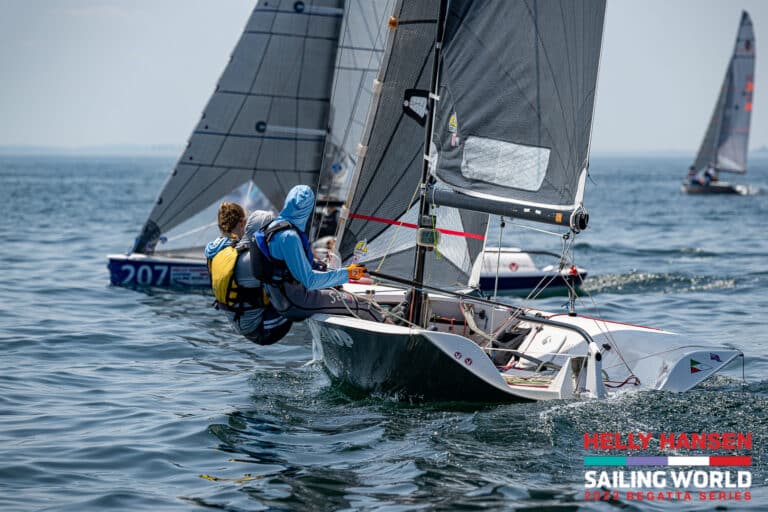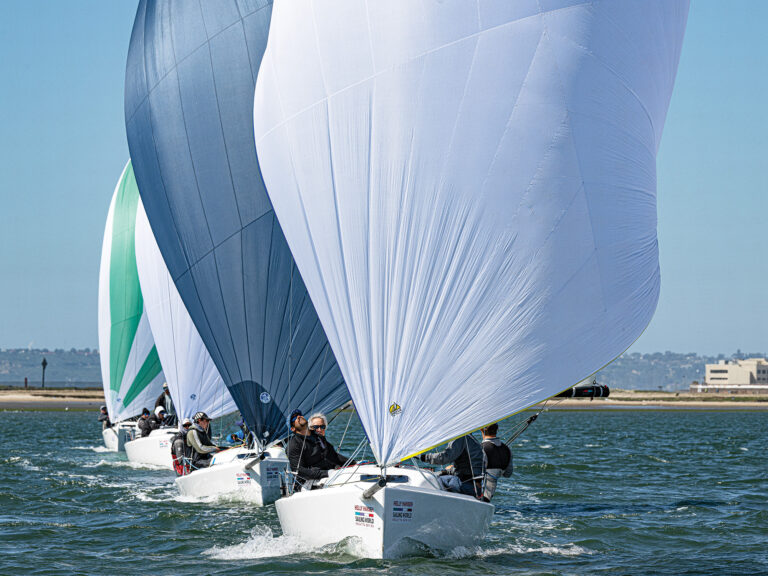“Has your boat been to the shop yet?” It was a puzzling question posed to me by a successful sailor. “No,” I replied, “what happens in the shop?” I had no idea which shop he was talking about. The mystery unfolded. “Well,” I was told, “all the fastest boats go into the shop to be altered, faired, and spiffed up before racing.” Hmm, this is supposed to be a strict one-design class. I dug further and learned about a shop that did extensive work on boats, and in doing so, wondered whether this activity was in the spirit of the class rules. Measurement procedures at regattas did not detect any irregularities, but boats from the aforementioned shop were noticeably faster. I didn’t acquire the services of the shop, but it made me think about the extremes some sailors go to in order to win races. In the competitive mindset, it’s a natural course of action, but the tragic result is that people get turned off and fleets shrink when sailors perceive the playing field isn’t as level as they’d been led to believe.Weeb Ewbank, a professional football coach of long ago, used to demand at league meetings that he wanted his “fair advantage.” On the racecourse, that is what we all want, a fair advantage. But what is it that makes the sailing unfair, and what can be done about it? Filing a protest is the usual course of action, but in most cases, the embarrassment of being exposed for serious indiscretions is remedy enough.The shop question also got me thinking about a few true stories you may find surprising (or maybe not). The names of the offenders have been withheld to protect their reputations. Let’s start with a few where sailors clearly went to too far in their pursuit of an advantage-into the realm of illegality.Some years ago, one ocean racer found a creative way to get measured by hanging lead weights from a thru-hull fitting to pull the bow down and improve the boat’s handicap. The owner was later banned from sailing.When it comes to weight reduction, sailors are a clever bunch. I know of three small dinghies that seemed to be faster than other boats in their fleet. Eventually it was discovered that the previous owners had carved the flotation out of the hulls. Perhaps these young sailors were naive at the time they scuttled their foam, but such an example makes the case for weighing boats at major championships.For an overnight race, one team had its navigator install a rheostat on the boat’s stern light. The navigator would dim it to make the competition think they were losing ground. Continuing on this theme, there are many night racers who turn their running lights off, which is a violation of the International Rules of the Road, and poor sportsmanship. It’s impossible to police such activities, so it’s up to the owners and crews to keep things on the level.There was a handicap raceboat a few years back that was measured with a fixed propeller, but was later found to be using a folding prop. Upon closer inspection, the boat’s interior, which had been present and intact for the measurement process, was also missing. The owner left the sport soon after. Occasional spot inspections would help everyone have confidence that the competition is fair.And how about “sailing rage?” An angry skipper once decided to ram his rival while under power. To drive the assault home, he backed off and rammed the boat a second time. Not exactly a winning move this guy also was banned from racing-forever.In a major regatta I sailed in some years ago, our crew was perplexed when our chief rival seemed to be faster in every wind condition. Eventually, we learned the rival was changing their measurement every night to fit the next day’s weather forecast. The other boat eventually lost. Another crew felt adding extra ballast would improve their boat’s performance, so they proceeded to load a half a dozen toolboxes filled with tools into the bilge. Their mast ended up breaking. Another large yacht used water ballast in compartments in the bilge for the upwind legs and would pump it out downwind. I understand that every boat wants to get rid of water that splashes in and collects in the bilge, but these guys clearly went overboard (no pun intended).One of the biggest challenges on the water is reading the wind. But how about teams who send up helicopters, and place observers on craft spread around the racecourse? I’ve heard of teams that download endless weather forecasts, check in with their weather experts during the race, use laser guided beams, or place coach boats or other sailboats on the favored side of the course. With the capability of wind and weather updates and text messages being sent to cellphones, the solution in the future might be to allow any means of communication. The danger is that sailing might end up being more of a video game with land-based weather routers dictating every tack or jibe.There are easy ways to improve your scoreline. For example, one crew used its engine to motor to the front of the fleet. Too bad they went to the wrong mark and lost anyway.There are some extremes sailors will go to that are perfectly legal but questionable. Here, again, I’ll pass along some true stories. There’s the one about the skipper who threw an extra set of foul weather gear overboard to save weight. Too bad his pants ripped the next day. There’s the crew that raced to Bermuda with only peanut butter and jelly to eat. The bread ran out on the second day. What about the dinghy crew who wore a helmet laden with water bottles, only to injure his neck?I once had to laugh at the creativity of one owner who had a spinnaker made out of clear material so his competitors could not tell whether he had a spinnaker up or not.Then there was the grinder who started lifting weights excessively. After several months his shoulders were as wide as a catamaran. The game ended when a bag of steroids was delivered to the sailor’s father, who had the same name. Oops!How about the three-man crew that wanted ballast and packed on 920 pounds between the three of them? They won the regatta, but the class later passed a weight limit. There was once an owner (employed as a scientist) who experimented with adding spent uranium to the keel. Luckily, that test was promptly outlawed. And, some years ago another scientist/sailor experimented with polymers being emitted from a bow tube to reduce the hull’s friction. This practice was also promptly outlawed. I was in a regatta recently, crossing a starboard tacker. We asked, “tack or cross?” One of the starboard boat’s crew waved us across and said, “Cross.” Then, just as we were about to clear, another crewmember on board yelled, “Protest!” After the race, the crew that yelled protest got quite belligerent; all we could do was simply walk away.Let’s not forget the America’s Cup spy in Newport who was arrested right out of the water while looking at the challenger’s keel. I bet it was a long night in jail wearing a wet suit.PHRF racers are notorious for finding the slightest edge-the point, after all, is to sail to one’s rating-and adding or subtracting crew depending on the strength of the wind is a rampant practice. Having three extra crew on the rail on a breezy day will improve your speed (and handicap) immeasurably, and this is lost on no one. Abandoning crew when winds go light does nothing to help the sport. Then there’s the case of a well-known one-design racer who sanded the non-skid off his deck to save weight. It sounded like a lot of work for a small weight loss, and I’m sure the foredeck crew did not endorse such a measure.It’s fun to look back and laugh at how far people will go to gain advantage, but the best part of these true stories is that the indiscretions were disclosed, and in the end, the offenders were exposed, which goes to show that cheaters indeed never win.









